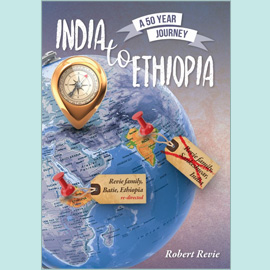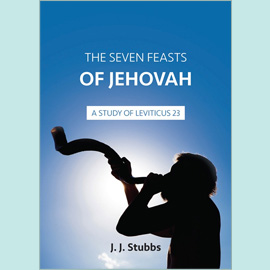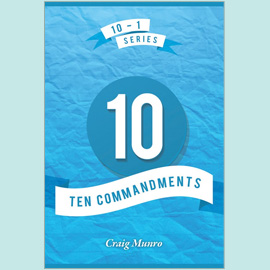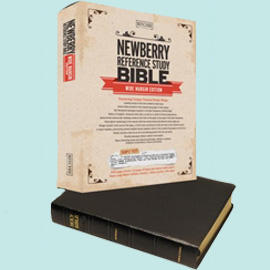Dear John,
We have already considered two distinct Biblical genres: doctrinal writing (as found in the New Testament letters) and narrative (such as the Gospels and the Old Testament historical books). The third kind of writing encountered in the Bible is poetry. Now all poetry involves the idea of repetition. In English we tend to think immediately of repeated sound patterns (rhyme) and repeated stress patterns (rhythm). Hebrew poetry, however, works on an entirely different principle: instead of repeated sounds or stresses it operates through repeated ideas. This is usually called parallelism. The thought contained in one line is reiterated (perhaps also expanded or developed) in the following line. One of the practical benefits of this is that Hebrew poetry, unlike English, can be translated into any language without losing its essential poetic quality. Rhyme and rhythm inevitably get lost in translation, but repetition of thought can be captured in any tongue. There is a wonderful universality about Hebrew song.
There are three main kinds of parallelism to watch out for in the Old Testament. First is synonymous parallelism. This means that an idea is repeated in different but similar words. Psalm 3.1 illustrates this for us, as David expresses to God his anxiety about the sheer number of his enemies:
Lord, how are they increased that trouble me!
Many are they that rise up against me.
Doubling the idea shows how it weighs down in David’s mind. One of the values of synonymous parallelism is that it often helps our interpretation of difficult Old Testament words and phrases. If there is something you cannot understand, see if the parallel line illuminates or explains it. Someone once suggested to me that Psalm 90.3 describes death in its first half but resurrection ("return") in its second. So it teaches that it is God who kills and makes alive. Well, the doctrine is of course perfectly true (see 1 Samuel 2.6 for a clear statement of it, again in a poetic context). But that is not, I think, the meaning of the psalm. A simple grasp of the principle of parallelism indicates that the two parts merely complement each other:
Thou turnest man to destruction;
and sayest, Return, ye children of men.
God turns man to destruction (literally, "powder"), commanding them to "return", not to life but to the dust from which they were made. The writer of the psalm, Moses, is echoing what he recorded in Genesis 3.19. Take another example. In Psalm 1.2 we learn that love and meditation go hand in hand. A genuine delight in God’s Word is expressed in and increased by constant meditation upon its riches. The way truly to love the Word is to spend time thinking seriously about it. In other words, study your Bible!
The second main form of parallelism is called antithetical. This sets up a sharp contrast. For example, Psalm 1.6 solemnly contrasts God’s approval of the righteous with the eternal ruin of the ungodly:
For the Lord knoweth the way of the righteous:
But the way of the ungodly shall perish.
Incidentally, you will discover that the word "know" here implies approval or favour rather than mere awareness if you consult Amos 3.2. God uniquely knew Israel in the sense that He acted in grace towards it, selecting it as His chosen nation and exercising fatherly discipline when it went astray. Always remember that the Bible interprets itself.
The third kind of parallelism is called synthetic: this builds up a series of linked ideas. Psalm 1.1 is not just a triad of analogous thoughts: it illustrates the power of sinful company to infect us with evil habits of life.
Blessed is the man that walketh not in the counsel of the ungodly,
nor standeth in the way of sinners,
nor sitteth in the seat of the scornful.
We learn that the blessed man (that is, the godly man) refuses to walk, or stand, or sit with those who are ungodly. That, by the way, is a powerful lesson on the value of saying "No"! You will notice the progression: from walking through standing to sitting. It is, you see, all too easy for casual association with the people of this world (just walking along with them) to lead to a more fixed and habitual connection with them and their ways. As Paul says, "evil communications [or companionships] corrupt good manners" (1 Cor 15.33).
You will be able to accumulate plenty of examples for yourself, bearing in mind that you are not restricted to the Psalms. Of course, that book alone has variety aplenty: wedding poems (45), confessions of sin (51), laments (22), prayers for help (69, 70), songs of worship and praise (145), summaries of national history (105, 106). God has significantly placed at the very heart of His inspired library a collection of 150 superb lyric poems - but that is not the end of Biblical poetry. In fact, about one half of the Old Testament is poetic. Not only are there five distinct books in poetic form (Job, Psalms, Proverbs, Ecclesiastes, Song of Solomon), all the prophetic books, with the interesting exception of Jonah, are written primarily in Hebrew verse. The great Old Testament foreview of Calvary in Isaiah 53 is in reality a magnificent Hebrew poem. This by no means undermines its accuracy; rather, poetry has the effect of bringing a level of powerful intensity to the written word. All this leads to the question: what is the function of poetry in the Bible?
Two things stand out. First of all, memorability: poetry sticks in the mind. Interestingly enough, several psalms and prophetic chapters use those alliterative techniques beloved of assembly preachers. Psalm 119 is divided into 22 sections, each devoted to a single letter of the Hebrew alphabet so that every verse in that section begins with the same letter. Even in the AV you can see something of the effect in the stanza covering verses 65 to 72: each but two begins with the letter T. The psalmist uses every letter of the alphabet, all the resources of human language, to celebrate the power of God’s word. The description of the virtuous woman in Proverbs 31 is alphabetical (see Newberry’s margin): it is an A-Z of female godliness. Jeremiah employs a similar alphabetical technique to both measure and moderate his profound grief over the fate of Jerusalem as recorded in the book of Lamentations.
But then the imagery of poetry carves itself on the memory: the blessed man of Psalm 1 is like a living tree - planted, fed and fruitful; whereas the ungodly are like the wind-blown chaff – dead, useless, helpless. Hebrew seems able to express itself vividly in pictorial terms.
Secondly, poetry has the effect of adding personal intensity to writing. A heightened form of language captures our emotions more vividly than plain prose. David communicates his deep grief by striking hyperbole: "I am weary with my groaning; all the night make I my bed to swim; I water my couch with my tears" (Ps 6.6). Perhaps the simplest way to demonstrate the contrast between prose and verse is to compare episodes which are recorded in both forms. The creation account in Genesis chapters 1 and 2 is a prose summary of the six 24-hour days in which God made the heavens and the earth. It is very important to note that this section of the Bible is not cast in the form of Hebrew verse, for some people would love to be able to dismiss it as simply figurative or metaphorical language. It is not: it is as solid, reliable history as the remainder of the book of Genesis, and its factual accuracy is attested by Scripture as a whole (Ex 20.8-11; Mk 10.6-9). On the other hand, Psalm 104 is a poetic account of God’s creative power and universal sovereignty, seeing His sustaining hand in the continuance of the world He made. A careful comparison will highlight the differences. Again, look at the prose description of the death of Sisera in Judges 4.17-22. The language is clear, unimpassioned, matter of fact, direct. But the following chapter translates cold historical narrative into all the energy of poetry that commemorates a divinely provided victory over Israel’s enemies. With its expanded synonymous parallelism Deborah’s Song (Judges 5.27) visualises Sisera’s death at the hand of Jael with the precision of a slow motion camera:
At her feet he bowed, he fell, he lay down: at her feet he bowed, he fell: where he bowed, there he fell down dead.
We see him collapsing slowly to the earth. In reality he never fell at all, because he was slain by a tent peg while lying on the ground. But Deborah’s inspired poetry creates a dramatic scene of monumental decline and fall: the proud Canaanite general is brought low.
Now, many young believers find the poetry of the Bible one of its most awkward features. This is partly because they are unfamiliar with poetry in any language and partly because appreciation of the heart-felt agonisings of the Psalms only comes with age and experience. Poetry does not obviously relate a story, or inculcate doctrinal truth, or tell us how to behave, or spell out the future. It can and does do all those things, but in a much subtler manner than straightforward prose. When Calvin writes about the Psalms, "I have been accustomed to call this book…An Anatomy of all the Parts of the Soul", he goes on to explain why: "for there is not an emotion of which any one can be conscious that is not here represented as in a mirror". In the fears and joys of David you will recognise the anxieties and longings of your own heart. And that can be a great comfort in distress. So do not give up on those parts of the Word you find least immediately relevant. You will grow into them in time.
Lots of love in Christ Jesus
David
To be continued.









